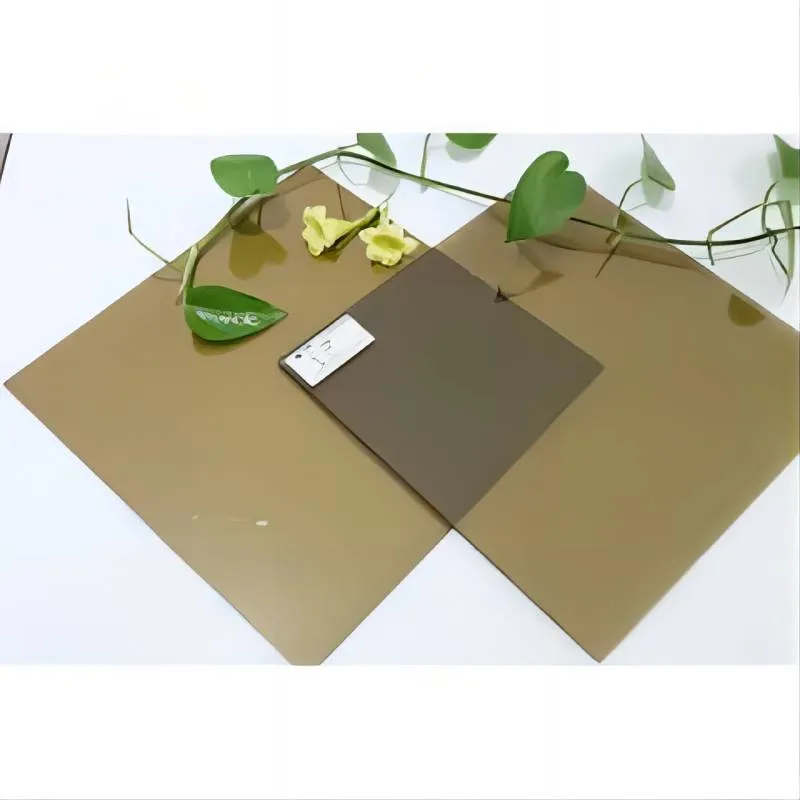The Significance of Architectural Glass Panels in Modern Design
In the realm of contemporary architecture, the use of architectural glass panels has emerged as a transformative trend that shapes not only the aesthetic but also the functional aspects of buildings. Glass has long been a favored material in architecture due to its unique ability to blend beauty, functionality, and sustainability. As urban environments continue to evolve and innovate, the integration of architectural glass panels offers advantages that extend beyond mere aesthetics.
Aesthetic Appeal
One of the most prominent features of architectural glass panels is their aesthetic appeal. The transparency and reflective qualities of glass can enhance the visual experience of a building, creating a sense of openness and connection to the surrounding environment. Architects increasingly utilize glass to maximize natural light within interior spaces, reducing the need for artificial lighting. This not only creates a more inviting atmosphere but also contributes to energy efficiency.
Furthermore, glass panels can be customized in various sizes, shapes, and finishes. From clear to frosted, colored, and patterned, the versatility of glass allows for endless creative possibilities. Designers can employ glass to convey specific moods or themes, making it a vital element in branding and identity. For instance, corporate offices may use sleek, minimal glass facades to project a modern image, while cultural institutions can incorporate artistic glass designs to reflect their unique character and heritage.
Functional Benefits
Beyond their aesthetic contributions, architectural glass panels offer significant functional benefits. Modern advancements in glass technology have led to the development of energy-efficient glazing options, which can significantly reduce a building's energy consumption. These innovations include double or triple glazing, low-emissivity coatings, and insulating gas fills, all of which improve thermal performance. By minimizing heat loss in winter and reducing heat gain in summer, buildings can maintain comfortable indoor climates with lower energy costs.
Moreover, architectural glass panels provide sound insulation, helping to create quieter spaces in bustling urban settings. The use of laminated or specially designed acoustic glass can significantly reduce noise pollution, contributing to the overall well-being of occupants. Such features make glass an ideal choice for residential, commercial, and mixed-use developments, where comfort and tranquility are desired.
architectural glass panels
Sustainable Building Practices
As sustainability becomes a core focus of the architectural industry, glass panels offer various environmentally friendly benefits. Their ability to incorporate natural daylight directly diminishes the reliance on artificial lighting, thus reducing energy consumption and carbon emissions. Additionally, many manufacturers now produce glass panels from recycled materials, further emphasizing the material's sustainability.
Furthermore, the integration of photovoltaic glass technology allows for the harnessing of solar energy through glass facades. This innovative approach enables buildings to generate their own electricity, significantly reducing their overall environmental impact. In this context, architectural glass panels not only fulfill aesthetic and functional roles but also contribute to a building’s sustainable credentials.
Challenges and Solutions
Despite the numerous advantages of architectural glass panels, they are not without challenges. Issues such as safety, privacy, and maintenance require careful consideration during the design and construction phases. However, advancements in technology have provided solutions. For instance, tempered and laminated glass offers increased safety, while smart glass technology allows for dynamic privacy settings and solar control through electrochromic glass that adjusts its tint based on sunlight exposure.
Effective maintenance solutions, such as self-cleaning glass or protective coatings, have also emerged, ensuring that glass surfaces remain pristine over time. By addressing these challenges, architects and builders can confidently embrace the use of glass in their designs.
Conclusion
In summary, architectural glass panels represent a pivotal element in modern architectural design, merging aesthetic appeal with practical functionality and sustainability. As urban landscapes continue to adapt and expand, the integration of glass panels provides architects with the tools necessary to create innovative and inviting spaces. With ongoing advancements in glass technology, the future of architectural glass panels promises to be even more dynamic, sustainable, and integral to the built environment. Ultimately, the rise of glass in architecture signifies not only a stylistic evolution but also a commitment to a brighter, more energy-efficient future.
 Afrikaans
Afrikaans  Albanian
Albanian  Amharic
Amharic  Arabic
Arabic  Armenian
Armenian  Azerbaijani
Azerbaijani  Basque
Basque  Belarusian
Belarusian  Bengali
Bengali  Bosnian
Bosnian  Bulgarian
Bulgarian  Catalan
Catalan  Cebuano
Cebuano  Corsican
Corsican  Croatian
Croatian  Czech
Czech  Danish
Danish  Dutch
Dutch  English
English  Esperanto
Esperanto  Estonian
Estonian  Finnish
Finnish  French
French  Frisian
Frisian  Galician
Galician  Georgian
Georgian  German
German  Greek
Greek  Gujarati
Gujarati  Haitian Creole
Haitian Creole  hausa
hausa  hawaiian
hawaiian  Hebrew
Hebrew  Hindi
Hindi  Miao
Miao  Hungarian
Hungarian  Icelandic
Icelandic  igbo
igbo  Indonesian
Indonesian  irish
irish  Italian
Italian  Japanese
Japanese  Javanese
Javanese  Kannada
Kannada  kazakh
kazakh  Khmer
Khmer  Rwandese
Rwandese  Korean
Korean  Kurdish
Kurdish  Kyrgyz
Kyrgyz  Lao
Lao  Latin
Latin  Latvian
Latvian  Lithuanian
Lithuanian  Luxembourgish
Luxembourgish  Macedonian
Macedonian  Malgashi
Malgashi  Malay
Malay  Malayalam
Malayalam  Maltese
Maltese  Maori
Maori  Marathi
Marathi  Mongolian
Mongolian  Myanmar
Myanmar  Nepali
Nepali  Norwegian
Norwegian  Norwegian
Norwegian  Occitan
Occitan  Pashto
Pashto  Persian
Persian  Polish
Polish  Portuguese
Portuguese  Punjabi
Punjabi  Romanian
Romanian  Russian
Russian  Samoan
Samoan  Scottish Gaelic
Scottish Gaelic  Serbian
Serbian  Sesotho
Sesotho  Shona
Shona  Sindhi
Sindhi  Sinhala
Sinhala  Slovak
Slovak  Slovenian
Slovenian  Somali
Somali  Spanish
Spanish  Sundanese
Sundanese  Swahili
Swahili  Swedish
Swedish  Tagalog
Tagalog  Tajik
Tajik  Tamil
Tamil  Tatar
Tatar  Telugu
Telugu  Thai
Thai  Turkish
Turkish  Turkmen
Turkmen  Ukrainian
Ukrainian  Urdu
Urdu  Uighur
Uighur  Uzbek
Uzbek  Vietnamese
Vietnamese  Welsh
Welsh  Bantu
Bantu  Yiddish
Yiddish  Yoruba
Yoruba  Zulu
Zulu 

